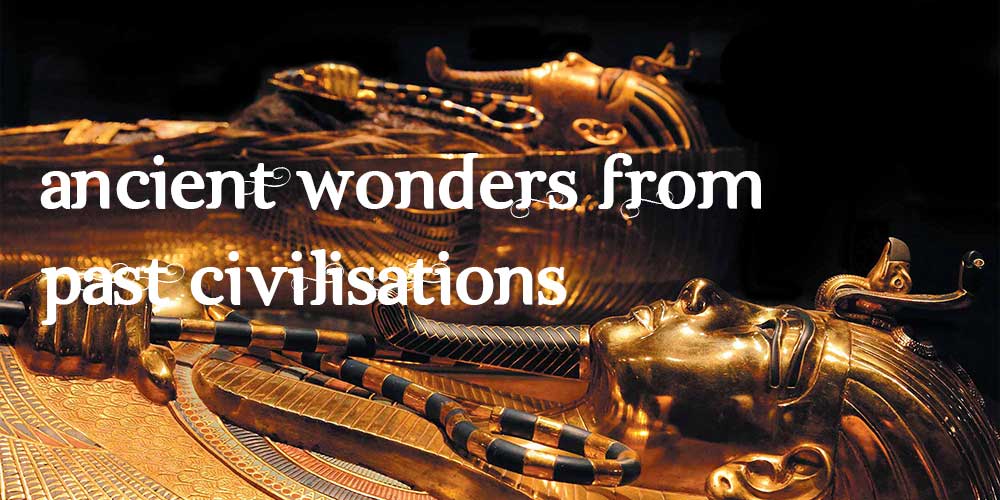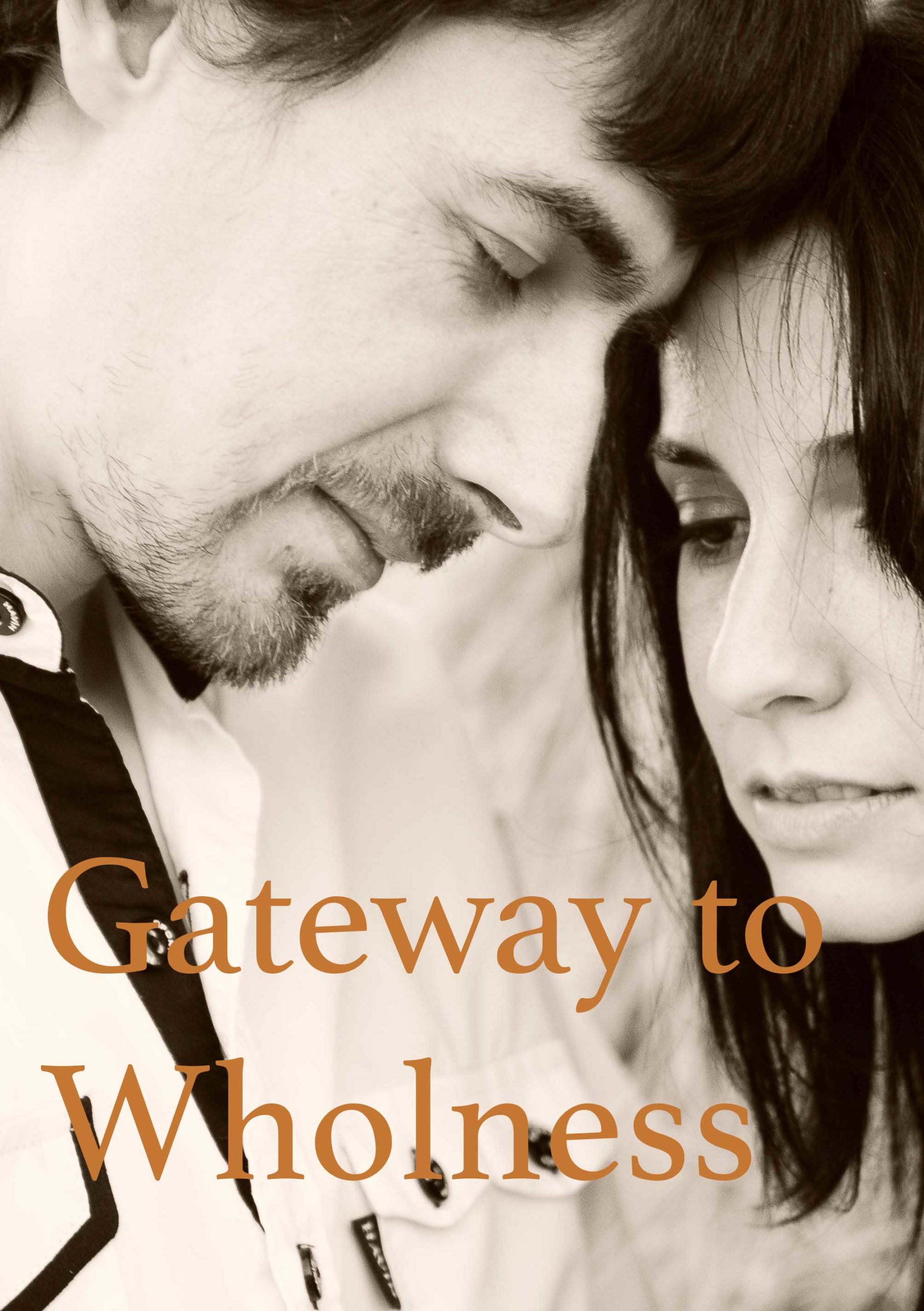
A Symbolic Path
Every human being finds himself/herself “lost” on the landscape of reality, sensing that life must mean something more than this—this emptiness, this brokenness, this addiction, this failed relationship, this ever-present ache—and yearning for a clear path through life to a better place, to the freedom and love we know we were made for. According to the Bible, as we have discovered in previous studies, we were made for a living love-relationship with our Maker. The problem is, we’ve been “alienated” from God by “sin” (Ephesians 4:18). The Bible says, “Your _________ have _______ you from your God” (Isaiah 59:2).
Graciously, God has provided a kind of spiritual map to mark out the steps of the journey He has taken to save us and that we are called upon to make in following Him. He has given us this map in an ingeniously simple yet powerful object lesson called “the sanctuary.”
“Your _____, oh God, is in the ____________” (Psalm 77:13).
The Hebrew word here translated “way” is Derek, which means path and carries the idea of making a journey. According to Scripture, then, the sanctuary depicts a path. Not a literal path, of course, but an experiential journey we are invited to embark upon, moving from our lost, alienated condition into a restored relationship with God. So, let’s map out the journey.
First, we notice that the sanctuary was comprised of three basic spaces or areas that were accessed through three veils, with six pieces of symbolic furniture to be encountered along the way (Exodus 26-27).
1. The Courtyard, with its (a) brass altar of sacrifice and (b) laver, or pool, of washing.
2. The Holy Place, furnished with (c) the table of shewbread, (d) the seven-branched candlestick, and (e) the altar of incense.
3. The Most Holy Place, which contained (f) the Ark of the Covenant.

Each area symbolized a specific phase of the plan of salvation, and each piece of furniture symbolized a specific aspect of Christ’s ministry to sinners, especially to those who follow Him on the journey. Using the following New Testament verses, what does each piece of furniture in the sanctuary teach us about Jesus and the plan of salvation?
Each of the three phases of the sanctuary could only be accessed through a veil, which pointed to Jesus, who said of Himself, “I am the _________. If anyone ________ by Me, he will be saved” (John 10:9).
Applying the symbolism of the sanctuary, the apostle Paul said that through Jesus we have “a new and living _______ which He consecrated for us, through the _________, that is, His _________” (Hebrews 10:20).
The main ceremony of the sanctuary was the sacrifice of the lamb on the brass altar. Pointing to Jesus as the sacrifice for our sins, John the Baptist proclaimed, “Behold! The ___________ of God who takes away the sin of the world” (John 1:29).
The laver, or pool, that was used for ceremonial washing teaches us about, “The __________ of _____________ and ___________ of the Holy Spirit” (Titus 3:5).
The table in the Holy Place that was kept supplied with fresh bread pointed to Jesus, who said, “I am the __________ of life. He who comes to Me shall never hunger, and he who believes in Me shall never thirst” (John 6:35).
The seven-branched lampstand was kept burning to provide light in the sanctuary. Jesus said of Himself, “I am the _________ of the world. He who follows Me shall not walk in darkness, but have the light of life” (John 8:12).
The altar of incense pointed to a specific aspect of Christian experience: “He was given much incense, that he should offer it with the ________ of the saints” (Revelation 8:3).
The Ten Commandments, God’s ten eternal laws of love engraved on stone tablets, were kept in the Most Holy Place inside a golden box called the Ark of the Covenant. But ultimately this symbolized God’s desire to put the Ten Commandments somewhere else: “I will put my laws into their ___________, and in their _________ I will write them” (Hebrews 10:16).
The Daily and The Yearly
Within the unfolding of its annual symbolic cycle of ceremonies, the sanctuary depicted the entire story of redemption. All the vital dimensions of God’s plan to save humanity and eradicate evil were revealed in a series of symbolic enactments. The sanctuary was placed at the center of Israel’s encampment. From north, south, east and west the high white linen wall surrounding the temple could be seen by all, communicating the sobering reality that sin has separated human beings from God, but that God has made a way of redemption by which the relationship may be restored.
The Daily Service (Leviticus 1-4): Each day, morning and evening sacrifice was made for the sins of the people in general. Also individual Israelites would bring their spotless sacrificial animals to the priest. Placing both hands on the head of the innocent victim, confession of sin was made, symbolizing the transfer of guilt from the sinner to a substitute. Then, the sinner would perform the horrific act of slitting thethroat of the animal, indicating that our sin would cost God suffering and death. Some of the blood was caught in a bowl by the priest. The slain lamb was placed on the brass altar and burned to ashes. Now the sinner was free from the burden of guilt. The priest would then continue the symbolic process by washing his hands and feet in the water of the laver. Then, he would take the bowl of blood into the Holy Place. Once there, the act was deliberate and meaningful. He would dip his fingers in the blood and sprinkle it on the veil before the Most Holy Place, repeating the act seven times, thus indicating as a prophetic promise that a perfect atonement for sin was to be made by the shed blood of the Messiah. Day by day throughout the year the ceremony was repeated.
The Yearly Service (Leviticus 16): Then, one day each year was Yom Kippur, the Day of Atonement. On this climactic day a special ceremony was enacted to symbolize the ultimate resolve of the sin problem, the full restoration of the broken relationship between God and mankind, and the total eradication of evil. “God inscribes each person’s fate for the coming year into a book, the Book of Life, on Rosh Hashanah (the start of the new year), and waits until Yom Kippur to seal the verdict” (wikipedia.org, the Yom Kippur entry). So the Day of Atonement was the day of final reckoning or judgment, on which each person’s case was sealed. As all of Israel gathered before the sanctuary, two goats were brought to the high priest. One was designated “for Lord” and the other as “the scapegoat,” Azazel in Hebrew. The Lord’s goat was slain, pointing forward to the sacrifice of Christ on the cross. Some of its blood was brought into the Most Holy Place and sprinkled seven times on the mercy seat over God’s broken law of love, thus indicating that complete and final atonement was made for all the sins Israel had confessed throughout the year in the daily service. Then the high priest placed both hands on the scapegoat and confessed over it all the sins of the people. However, Azazel’s goat was not slain. Rather, it was led into “an uninhabited land,” to perish in “the wilderness” alone, by implication. Since the scapegoat was explicitly not the Lord’s goat, and since its blood was not shed as a sacrifice, Azazel must symbolize another figure that bears responsibility for the existence of evil and the fall of humanity. The ancient Hebrew people and Jewish scholars to this day have understood that Azazel represents Satan, the originator of evil and the tempter of mankind (see wikipedia.org, the Azazel entry). Thus the Day of Atonement symbolized the final segment of human history when sin and Satan, the originator of evil, will be finally and fully eradicated.
DISCUSSION: If the death of Christ on the cross fulfills the Courtyard phase of the plan of salvation, and if the ascension of Christ as our High Priest fulfills the Holy Place phase, what part of salvation history are we now living in that would correspond to the Most Holy Place? See Daniel 7:9-10; Revelation 14:6-7; Hebrews 10:1-25.
[CONNECT]
In one epic burst of luminous glory, all the symbols of the sanctuary converge in Christ with perfect fulfillment.
We’ve read in Psalm 77:13, “Your way, oh God, is in the sanctuary.” Jesus said of Himself, “I am the way, the truth, and the life. No man comes to the Father except by Me” (John 14:6). Describing the journey He made from the Father to us and back again, Jesus said, “I came forth from the Father and have come into the world. Again, I leave the world and go to the Father” (John 16:28). Picturing the journey depicted in the sanctuary, we see that Jesus came from the Most Holy Place into our separated encampment here on earth. Then He made the journey back to the Most Holy Place on our behalf, inviting us to follow Him on the path He has marked out for us: through the veil into the Courtyard to encounter His selfless death for us at the altar of sacrifice, onward to the laver for moral cleansing, into the Holy Place to partake of the bread of life, to the seven-branched lampstand to experience the illuminating ministry of the Holy Spirit, to approach God through Him in prayer at the altar of incense, and ultimately to enter the Most Holy Place to have His law of love written in our hearts.
[EXPERIENCE]
I want to take this journey to the heart of God symbolized by the various steps depicted in the sanctuary.
What an amazing thing it is that God would love me so much that He would make a way for me to be fully restored to fellowship with Him. “O God, You are my God; early will I seek You; my soul thirsts for You; my flesh longs for You in a dry and thirsty land where there is no water. So I have looked for You in the sanctuary, to see Your power and Your glory. . . . My soul follows close behind You” (Psalm 63:1)
Phone 1300 300 389

































